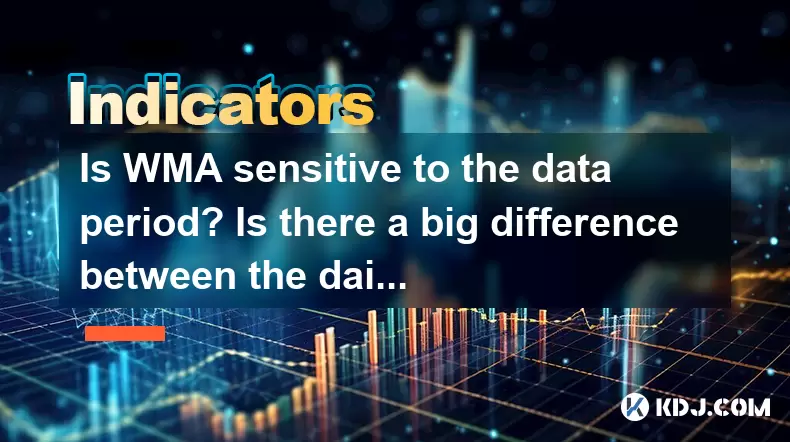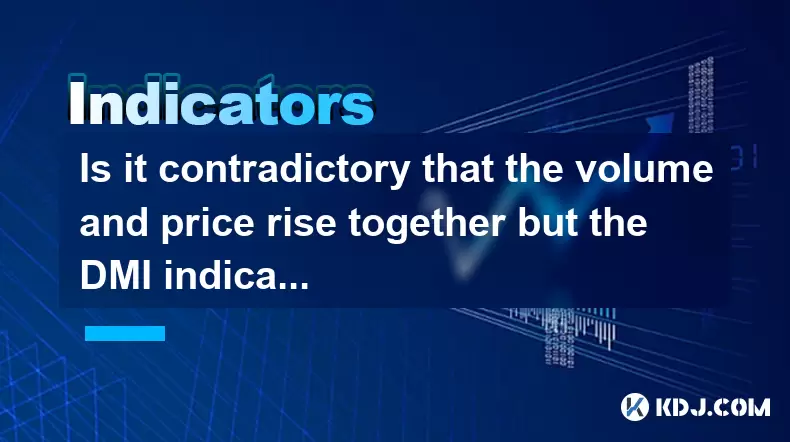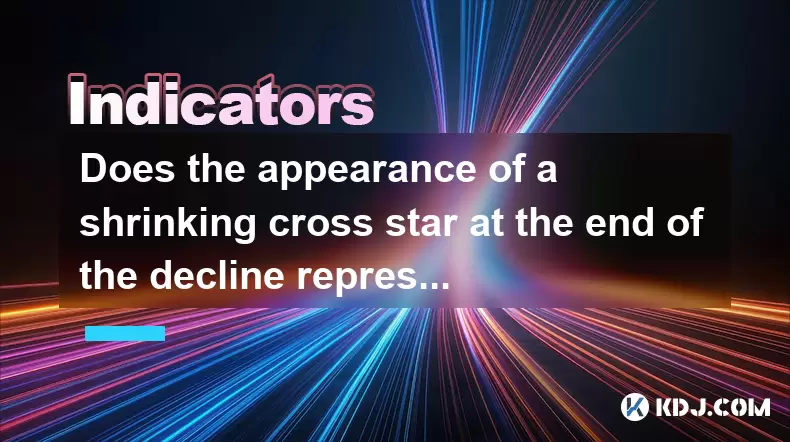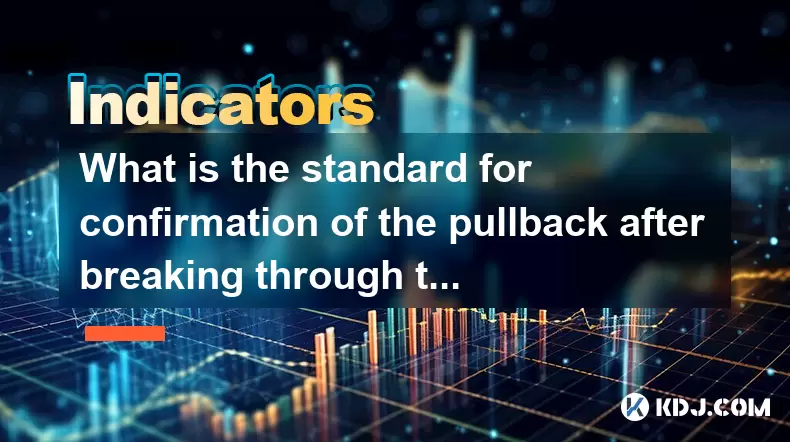-
 Bitcoin
Bitcoin $101,898.5005
-0.75% -
 Ethereum
Ethereum $2,258.1125
-1.07% -
 Tether USDt
Tether USDt $1.0004
0.01% -
 XRP
XRP $2.0178
-2.93% -
 BNB
BNB $624.0243
-1.53% -
 Solana
Solana $134.3298
-0.90% -
 USDC
USDC $0.9999
0.01% -
 TRON
TRON $0.2675
-2.05% -
 Dogecoin
Dogecoin $0.1538
-1.96% -
 Cardano
Cardano $0.5482
-1.11% -
 Hyperliquid
Hyperliquid $35.5636
5.45% -
 Bitcoin Cash
Bitcoin Cash $453.4902
-1.66% -
 Sui
Sui $2.5134
-2.97% -
 UNUS SED LEO
UNUS SED LEO $9.1292
1.77% -
 Chainlink
Chainlink $11.8457
-1.60% -
 Stellar
Stellar $0.2312
-2.73% -
 Avalanche
Avalanche $16.9721
0.29% -
 Toncoin
Toncoin $2.7549
-3.82% -
 Shiba Inu
Shiba Inu $0.0...01081
-1.10% -
 Litecoin
Litecoin $80.8250
-0.71% -
 Hedera
Hedera $0.1374
0.21% -
 Monero
Monero $305.4827
-2.36% -
 Ethena USDe
Ethena USDe $1.0006
0.00% -
 Dai
Dai $1.0000
-0.01% -
 Polkadot
Polkadot $3.2085
-3.12% -
 Bitget Token
Bitget Token $4.0845
-3.13% -
 Uniswap
Uniswap $6.3353
-1.63% -
 Pi
Pi $0.5085
-0.70% -
 Pepe
Pepe $0.0...08913
-3.82% -
 Aave
Aave $232.7090
-0.58%
Is WMA sensitive to the data period? Is there a big difference between the daily and weekly lines?
The WMA's sensitivity to data periods affects its responsiveness; daily WMA reacts quickly to price changes, while weekly WMA offers a smoother, less volatile trend line.
May 23, 2025 at 09:36 am

The Weighted Moving Average (WMA) is a popular technical indicator used by traders in the cryptocurrency market to smooth out price data and identify trends. One of the critical considerations when using the WMA is understanding its sensitivity to the data period. In this article, we will explore how the WMA reacts to different data periods, specifically focusing on the differences between daily and weekly lines.
Understanding the Weighted Moving Average
The Weighted Moving Average (WMA) is a type of moving average that assigns a higher weighting to more recent data points. Unlike the simple moving average (SMA), which gives equal weight to all data points, the WMA emphasizes the most recent prices, making it more responsive to new information. The formula for calculating the WMA is:
[ \text{WMA} = \frac{\sum_{i=1}^{n} w_i \cdot Pi}{\sum{i=1}^{n} w_i} ]
Where ( P_i ) is the price at time ( i ), and ( w_i ) is the weight assigned to that price. The weights typically increase linearly, with the most recent data point receiving the highest weight.
Sensitivity to Data Period
The sensitivity of the WMA to the data period refers to how the indicator's output changes when the time frame of the data used to calculate it is altered. Data period can significantly influence the WMA's responsiveness and accuracy in reflecting market trends. Shorter periods, such as daily data, will result in a WMA that is more sensitive to recent price changes, while longer periods, like weekly data, will produce a smoother line that is less reactive to short-term fluctuations.
Daily WMA vs. Weekly WMA
When comparing the daily WMA to the weekly WMA, several key differences emerge:
Responsiveness: The daily WMA is more responsive to recent price movements. Because it is calculated using daily data, it will reflect changes in the market more quickly than the weekly WMA. This can be advantageous for traders looking to capitalize on short-term trends.
Smoothness: The weekly WMA, on the other hand, is smoother and less affected by daily volatility. This makes it more suitable for identifying longer-term trends and can be beneficial for traders with a more extended investment horizon.
Lag: The weekly WMA will have a greater lag compared to the daily WMA. This means that it might take longer for the weekly WMA to reflect significant changes in the market, which could result in delayed signals for traders.
Practical Example: Daily vs. Weekly WMA on Bitcoin
To illustrate the differences between daily and weekly WMAs, let's consider an example using Bitcoin (BTC) price data.
Daily WMA: If we calculate the WMA using daily closing prices of Bitcoin, the resulting line will closely follow the price movements. For instance, if Bitcoin experiences a sharp price increase over a few days, the daily WMA will quickly adjust to reflect this change. This can be useful for traders looking to enter or exit positions based on short-term trends.
Weekly WMA: Conversely, if we use weekly closing prices to calculate the WMA, the resulting line will be much smoother. It will not react as quickly to the same price increase over a few days, as it averages the price over the entire week. This can be beneficial for traders who are more interested in the overall direction of the market rather than daily fluctuations.
Applying WMA in Trading Strategies
Understanding the differences between daily and weekly WMAs can help traders develop more effective trading strategies. Here are some considerations:
Short-term Trading: Traders focusing on short-term gains might prefer using the daily WMA. This can help them identify entry and exit points based on short-term trends. For example, a trader might buy Bitcoin when the price crosses above the daily WMA and sell when it crosses below.
Long-term Investing: For long-term investors, the weekly WMA might be more appropriate. This can help them stay focused on the broader market trends and avoid being swayed by daily volatility. An investor might use the weekly WMA to determine whether Bitcoin is in an uptrend or downtrend and make investment decisions accordingly.
Combining Both: Some traders might find it beneficial to use both daily and weekly WMAs. For instance, they could use the daily WMA for short-term trading signals and the weekly WMA to confirm the overall market trend. This approach can provide a more comprehensive view of the market.
Technical Analysis with WMA
When using the WMA for technical analysis, it's essential to consider the following:
Crossover Signals: One common strategy is to look for crossovers between the price and the WMA. A price crossing above the WMA can be a bullish signal, while a price crossing below can be bearish. However, the sensitivity of the WMA to the data period will affect the timing of these signals.
Multiple WMAs: Traders often use multiple WMAs with different periods to generate more robust signals. For example, a trader might use a short-term daily WMA (e.g., 10-day) and a longer-term weekly WMA (e.g., 52-week) to identify both short-term and long-term trends.
Confirmation: It's crucial to use other technical indicators alongside the WMA to confirm signals. For instance, combining the WMA with the Relative Strength Index (RSI) or Moving Average Convergence Divergence (MACD) can provide more reliable trading signals.
Adjusting WMA Parameters
Traders can adjust the parameters of the WMA to suit their trading style and market conditions. Here are some tips for fine-tuning the WMA:
Period Length: The length of the period used in the WMA calculation can be adjusted. A shorter period will result in a more sensitive WMA, while a longer period will produce a smoother line. Traders should experiment with different lengths to find what works best for their strategy.
Weighting Scheme: The weighting scheme can also be customized. While the standard WMA uses a linear weighting system, some traders might prefer a different approach, such as an exponential weighting that gives even more emphasis to recent data.
Backtesting: Before applying any changes to live trading, it's essential to backtest the adjusted WMA parameters using historical data. This can help traders understand how the changes would have performed in the past and make more informed decisions.
FAQs
Q1: Can the WMA be used effectively in highly volatile markets?
Yes, the WMA can be used in volatile markets, but its effectiveness depends on the chosen period and the trader's strategy. In highly volatile markets, a shorter period WMA might be more suitable for capturing quick price movements, while a longer period WMA can help filter out noise and focus on broader trends.
Q2: How does the WMA compare to other moving averages like the EMA and SMA?
The WMA is more responsive to recent price changes than the SMA but less so than the Exponential Moving Average (EMA). The EMA gives even more weight to the most recent data, making it the most sensitive of the three. The choice between WMA, EMA, and SMA depends on the trader's preference for responsiveness versus smoothness.
Q3: Is it possible to use the WMA for different cryptocurrencies simultaneously?
Yes, the WMA can be applied to multiple cryptocurrencies simultaneously. Traders often use the same WMA settings across different assets to maintain consistency in their analysis. However, they should be aware that different cryptocurrencies might have different levels of volatility and market behavior, which could affect the WMA's performance.
Q4: How often should the WMA be recalculated for optimal results?
The frequency of WMA recalculation depends on the trading strategy. For short-term trading, recalculating the WMA daily or even intraday might be necessary to capture the latest market movements. For long-term investing, weekly or monthly recalculations might be sufficient to monitor broader trends.
Disclaimer:info@kdj.com
The information provided is not trading advice. kdj.com does not assume any responsibility for any investments made based on the information provided in this article. Cryptocurrencies are highly volatile and it is highly recommended that you invest with caution after thorough research!
If you believe that the content used on this website infringes your copyright, please contact us immediately (info@kdj.com) and we will delete it promptly.
- VanEck, Pudgy Penguins, and Nasdaq: A New York Minute on Crypto's Big Moves
- 2025-06-24 01:05:12
- Ripplecoin Cloud Mining: Earn Daily Crypto Rewards?
- 2025-06-24 00:25:13
- SEI Price Prediction: Crypto Analyst Sees Potential Jump to $0.30!
- 2025-06-24 01:05:12
- Dogecoin, Cardano, and Crypto Security: Navigating the Wild West
- 2025-06-24 00:45:12
- Dogecoin Price Analysis and Ozak AI: Riding the Crypto Wave in Style
- 2025-06-24 00:45:12
- Neo Pepe Presale: The Next Big Meme Coin?
- 2025-06-24 00:32:08
Related knowledge

How to interpret that the time-sharing chart shows "volume and price rise together" but the MACD red column shortens?
Jun 24,2025 at 01:08am
Understanding the Concept of 'Volume and Price Rise Together'In cryptocurrency trading, when a time-sharing chart shows that both volume and price rise together, it is typically interpreted as a sign of strong buying pressure. This means more traders are entering long positions, pushing the price higher while increasing the trading volume. This phenomen...

Is it contradictory that the moving average system is arranged in a bullish pattern but the DMI shows a decline in trend strength?
Jun 23,2025 at 11:43pm
Understanding the Moving Average and DMI RelationshipIn cryptocurrency trading, technical analysis plays a crucial role in identifying potential trends and making informed decisions. Two of the most commonly used indicators are the Moving Average (MA) and the Directional Movement Index (DMI). While both tools aim to provide insight into market direction...

What is the significance of the gap formed by the gap opening not being filled within five days?
Jun 23,2025 at 09:42pm
Understanding Gaps in Cryptocurrency TradingIn the world of cryptocurrency trading, a gap refers to a situation where the price of an asset jumps from one level to another without any trading activity occurring between those two levels. This often happens over weekends or holidays when the market is closed, and significant news or events occur that impa...

Is it contradictory that the volume and price rise together but the DMI indicator shows that the trend strength decreases?
Jun 24,2025 at 01:00am
Understanding the Relationship Between Volume, Price, and DMIIn the world of cryptocurrency trading, it is common for traders to analyze multiple indicators simultaneously to form a comprehensive view of market conditions. Volume and price are two of the most basic and widely used metrics in technical analysis. When both volume and price rise together, ...

Does the appearance of a shrinking cross star at the end of the decline represent a signal to stop the decline?
Jun 24,2025 at 12:14am
Understanding the Shrinking Cross Star PatternIn the world of cryptocurrency trading, candlestick patterns play a crucial role in technical analysis. One such pattern is the shrinking cross star, which often appears at the end of a downtrend. This pattern consists of a candle with a small body, typically appearing after a series of bearish candles, and ...

What is the standard for confirmation of the pullback after breaking through the neckline with large volume?
Jun 23,2025 at 11:28pm
Understanding the Neckline in Technical AnalysisIn technical analysis, the neckline is a critical support or resistance level that appears in chart patterns such as head and shoulders, double tops, and double bottoms. It typically connects two or more lows (in the case of a head and shoulders top) or highs (in the case of a head and shoulders bottom). W...

How to interpret that the time-sharing chart shows "volume and price rise together" but the MACD red column shortens?
Jun 24,2025 at 01:08am
Understanding the Concept of 'Volume and Price Rise Together'In cryptocurrency trading, when a time-sharing chart shows that both volume and price rise together, it is typically interpreted as a sign of strong buying pressure. This means more traders are entering long positions, pushing the price higher while increasing the trading volume. This phenomen...

Is it contradictory that the moving average system is arranged in a bullish pattern but the DMI shows a decline in trend strength?
Jun 23,2025 at 11:43pm
Understanding the Moving Average and DMI RelationshipIn cryptocurrency trading, technical analysis plays a crucial role in identifying potential trends and making informed decisions. Two of the most commonly used indicators are the Moving Average (MA) and the Directional Movement Index (DMI). While both tools aim to provide insight into market direction...

What is the significance of the gap formed by the gap opening not being filled within five days?
Jun 23,2025 at 09:42pm
Understanding Gaps in Cryptocurrency TradingIn the world of cryptocurrency trading, a gap refers to a situation where the price of an asset jumps from one level to another without any trading activity occurring between those two levels. This often happens over weekends or holidays when the market is closed, and significant news or events occur that impa...

Is it contradictory that the volume and price rise together but the DMI indicator shows that the trend strength decreases?
Jun 24,2025 at 01:00am
Understanding the Relationship Between Volume, Price, and DMIIn the world of cryptocurrency trading, it is common for traders to analyze multiple indicators simultaneously to form a comprehensive view of market conditions. Volume and price are two of the most basic and widely used metrics in technical analysis. When both volume and price rise together, ...

Does the appearance of a shrinking cross star at the end of the decline represent a signal to stop the decline?
Jun 24,2025 at 12:14am
Understanding the Shrinking Cross Star PatternIn the world of cryptocurrency trading, candlestick patterns play a crucial role in technical analysis. One such pattern is the shrinking cross star, which often appears at the end of a downtrend. This pattern consists of a candle with a small body, typically appearing after a series of bearish candles, and ...

What is the standard for confirmation of the pullback after breaking through the neckline with large volume?
Jun 23,2025 at 11:28pm
Understanding the Neckline in Technical AnalysisIn technical analysis, the neckline is a critical support or resistance level that appears in chart patterns such as head and shoulders, double tops, and double bottoms. It typically connects two or more lows (in the case of a head and shoulders top) or highs (in the case of a head and shoulders bottom). W...
See all articles
























































































